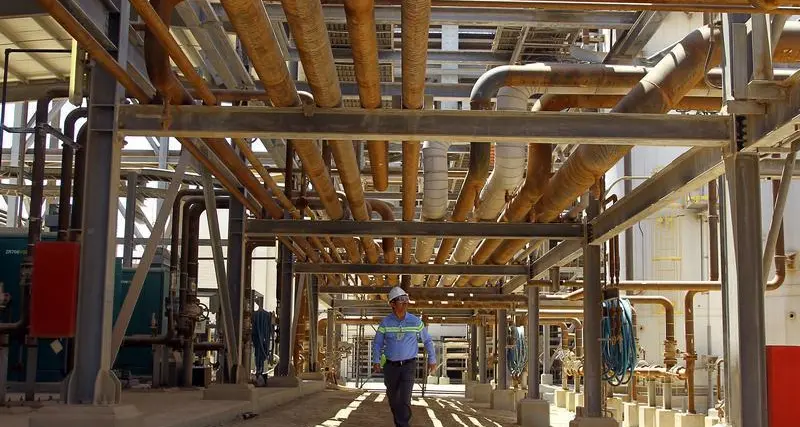23 August 2015
Muscat: Photovoltaic (PV) systems installed atop residential buildings across the Sultanate can offer an estimated 1.4 gigawatts (GW) of solar-based renewable energy capacity, a key study commissioned by Oman's Public Authority for Electricity and Water (PAEW) has revealed. Rooftop PV capacity in Muscat Governorate alone is estimated at 450 megawatts (MW), equivalent to a mid-size gas based conventional power plant, according to Khalil Alzidi, PAEW's Senior Engineer -- Renewable Energy, citing the study. The rooftop renewable energy study was undertaken in collaboration with the German Agency for International Cooperation (GIZ), a federal body that represents the German government in developmental cooperation around the world.
It explored the potential for the installation of photovoltaic systems for electricity generation atop private homes, mirroring the current trend in parts of Europe and the Far East, where solar-based electrical energy generated by individual homes accounts for a growing percentage of national output.
A key part of the study, according to Alzidi, was to "investigate the importance of incentives (for renewable energy development) from the technical and financial standpoints".
"One of the recommendations that came out of the study was for the introduction of a Feed-in-Tariff (FiT) mechanism, which does not exist at the moment. The absence of Feed-in-Tariffs is one of the (shortcomings) that needs to be addressed (if private investment in renewable energy development is to make headway in the Sultanate," the official noted.
FiT allows for those who have renewable energy capacity to sell their surplus electricity to the local grid.
Tens of thousands of homes and businesses across Europe have made the most of FiT to invest in mainly photovoltaic based solar energy capacity installed atop their homes and buildings. Surplus electricity from these investments is sold to the local grid.
The PAEW study has determined that a FiT scheme covering rooftop PV capacity should ideally be of 20 years' duration if it is to be viable in the Sultanate.
Already a number of prominent organisations have piloted rooftop solar photovoltaic initiatives in support of renewable energy development. The first was by Majan Electricity Company, a subsidiary of Nama Group, which has installed around 40 kW of photovoltaic capacity atop its head office in Sohar, together with another 3 kW atop the car park within the complex.
Earlier, in 2010, The Knowledge Oasis Muscat (KOM) installed a 6 kW concentrated photovoltaic (CPV) on-grid system within the IT Park at Rusayl. And as part of its R&D initiatives, Sultan Qaboos University has installed a 1 kW PV system in a desert setting to test the equipment's performance in harsh desert environments.
Muscat: Photovoltaic (PV) systems installed atop residential buildings across the Sultanate can offer an estimated 1.4 gigawatts (GW) of solar-based renewable energy capacity, a key study commissioned by Oman's Public Authority for Electricity and Water (PAEW) has revealed. Rooftop PV capacity in Muscat Governorate alone is estimated at 450 megawatts (MW), equivalent to a mid-size gas based conventional power plant, according to Khalil Alzidi, PAEW's Senior Engineer -- Renewable Energy, citing the study. The rooftop renewable energy study was undertaken in collaboration with the German Agency for International Cooperation (GIZ), a federal body that represents the German government in developmental cooperation around the world.
It explored the potential for the installation of photovoltaic systems for electricity generation atop private homes, mirroring the current trend in parts of Europe and the Far East, where solar-based electrical energy generated by individual homes accounts for a growing percentage of national output.
A key part of the study, according to Alzidi, was to "investigate the importance of incentives (for renewable energy development) from the technical and financial standpoints".
"One of the recommendations that came out of the study was for the introduction of a Feed-in-Tariff (FiT) mechanism, which does not exist at the moment. The absence of Feed-in-Tariffs is one of the (shortcomings) that needs to be addressed (if private investment in renewable energy development is to make headway in the Sultanate," the official noted.
FiT allows for those who have renewable energy capacity to sell their surplus electricity to the local grid.
Tens of thousands of homes and businesses across Europe have made the most of FiT to invest in mainly photovoltaic based solar energy capacity installed atop their homes and buildings. Surplus electricity from these investments is sold to the local grid.
The PAEW study has determined that a FiT scheme covering rooftop PV capacity should ideally be of 20 years' duration if it is to be viable in the Sultanate.
Already a number of prominent organisations have piloted rooftop solar photovoltaic initiatives in support of renewable energy development. The first was by Majan Electricity Company, a subsidiary of Nama Group, which has installed around 40 kW of photovoltaic capacity atop its head office in Sohar, together with another 3 kW atop the car park within the complex.
Earlier, in 2010, The Knowledge Oasis Muscat (KOM) installed a 6 kW concentrated photovoltaic (CPV) on-grid system within the IT Park at Rusayl. And as part of its R&D initiatives, Sultan Qaboos University has installed a 1 kW PV system in a desert setting to test the equipment's performance in harsh desert environments.
© Oman Daily Observer 2015











